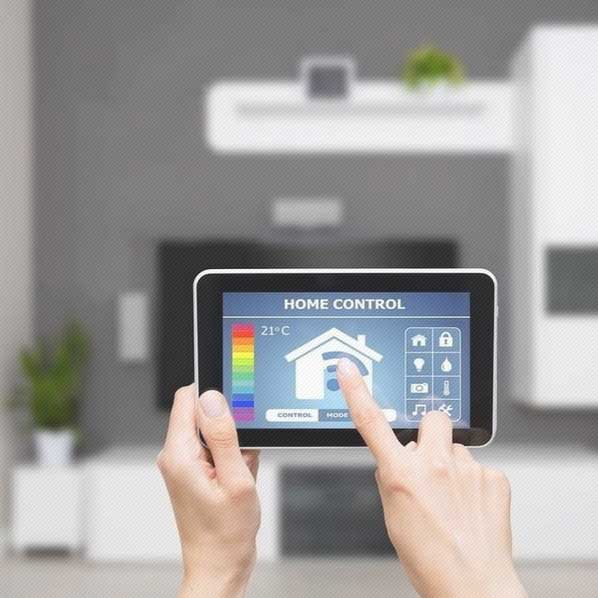
26
Feb
Ultimate Beginner’s Guide to Smart Home Automation: Transform Your Living Space in 2025
In today’s fast-paced world, managing your home shouldn’t add extra stress to your busy schedule. Imagine walking into a home that anticipates your needs—from adjusting the lights and temperature to securing your space—without you having to lift a finger. Welcome to the future of living with smart home automation. This guide is designed specifically for newcomers, offering a smart home setup guide that breaks down complex concepts into simple, actionable steps. Whether you’re frustrated with traditional home management or simply curious about how technology can simplify your life, you’re in the right place.
In this comprehensive guide, you’ll learn:
- The basics of smart home automation and why it’s a game-changer.
- Essential smart home devices for beginners, such as smart lights, plugs, and thermostats.
- A step-by-step smart home setup guide including compatibility tips and troubleshooting common challenges.
- Practical room-by-room automation suggestions and a handy setup checklist.
- A cost-benefit analysis to help you decide if the investment is worth it.
Let’s dive into the world of smart home automation and explore how you can transform your living space in 2025.
1. Understanding Smart Home Automation
Before diving into specific devices and setup steps, it’s important to understand what smart home automation is all about. At its core, smart home automation involves using internet-connected devices (commonly known as the Internet of Things or IoT) to control various functions in your home remotely and automatically. Here are some key points:
- Centralized Control: Use a smartphone, tablet, or voice commands via smart speakers to control everything from lighting to security.
- Energy Efficiency: Automate routines to save energy, such as adjusting the thermostat when you’re not home.
- Enhanced Security: Integrated security systems, including smart locks and cameras, allow you to monitor and secure your home no matter where you are.
- Convenience: Routine tasks, like turning on the coffee maker in the morning or dimming the lights for movie night, become seamless and automated.
For beginners, the idea of connecting various devices might seem daunting. However, modern smart home systems are designed with simplicity in mind, allowing you to start small and expand gradually.
2. Essential Starter Devices for Beginners
When embarking on your smart home journey, it’s best to begin with devices that offer the most immediate benefits. Here are some of the most popular starter devices:
Smart Lights
Smart bulbs and lighting systems allow you to control brightness, color, and timing with just a tap or voice command. They are energy-efficient and can enhance both the ambiance and security of your home.
Smart Plugs
Smart plugs transform ordinary appliances into smart devices by enabling remote control and scheduling. They’re ideal for managing devices that don’t have built-in smart capabilities.
Smart Thermostats
A smart thermostat learns your schedule and adjusts the temperature automatically, leading to significant energy savings and improved comfort.
Real-Life Use Case
Imagine coming home on a chilly evening, and your smart thermostat has already warmed up the house. As you enter, the lights automatically turn on, welcoming you with a cozy ambiance—all without you having to think twice.
Comparison Table: Popular Starter Devices
| Device Type | Example Model | Price Range | Compatibility | Setup Complexity | Pros | Cons |
|---|---|---|---|---|---|---|
| Smart Lights | Philips Hue, LIFX | $$ | Alexa, Google Home, Apple HomeKit | Low | Customizable colors & schedules | Requires a hub for some models |
| Smart Plugs | TP-Link Kasa | $ | Alexa, Google Home | Very Low | Easy integration, affordable | Limited to on/off control |
| Smart Thermostats | Nest Thermostat | $$$ | Alexa, Google Home, Apple HomeKit | Moderate | Energy saving, adaptive scheduling | Higher initial cost |
| Voice Assistants | Amazon Echo, Google Home | $ to $$ | Multiple smart devices | Very Low | Central control hub, voice commands | Privacy concerns for some users |
Note: Prices are approximate. Check our Smart Home Devices Category for the latest deals and detailed product reviews.
3. Step-by-Step Smart Home Setup Guide
Transitioning to a smart home might feel overwhelming at first, but breaking it down into manageable steps makes it much easier. Here’s a smart home setup guide tailored for beginners:
Step 1: Assess Your Needs
- Identify Pain Points: What aspects of home management do you find most frustrating? Is it energy waste, security concerns, or simply the hassle of manual controls?
- Set Priorities: Determine which areas (lighting, climate, security) will benefit most from automation.
Step 2: Choose Your Starter Kit
- Starter Kits: Many companies offer bundles that include a variety of devices at a discounted rate. These kits are often labeled “Best for Beginners” in our store.
- Compatibility Check: Ensure that the devices are compatible with your preferred smart home ecosystem (e.g., Alexa, Google Home, or Apple HomeKit).
Step 3: Install the Devices
- Follow Manufacturer Instructions: Most smart devices come with easy-to-follow installation guides.
- Position Strategically: Place devices in areas where they will have the most impact, such as entryways, living rooms, or near windows.
Step 4: Connect and Configure
- Set Up Your Hub: Many smart devices connect through a central hub. Follow the setup guide to link your devices.
- Create Routines: Use your smart home app to set up routines (e.g., “Good Morning” routine that adjusts the thermostat, turns on the lights, and plays your favorite news briefing).
Step 5: Test and Troubleshoot
- Perform a Dry Run: Test each device individually and as part of your routine.
- Troubleshooting: Consult the troubleshooting sections of the device manuals if issues arise. Online forums and customer support are also valuable resources.
By following these steps, you can gradually build a seamless and efficient smart home environment.
4. Overcoming Common Challenges in Smart Home Automation
Even with user-friendly devices, you might encounter a few common challenges when setting up your smart home. Here’s how to tackle them:
Connectivity Issues
- Problem: Devices not connecting or losing connection.
- Solution: Ensure your Wi-Fi network is robust and consider using a Wi-Fi extender in larger homes.
Compatibility Concerns
- Problem: Devices from different manufacturers might not communicate seamlessly.
- Solution: Stick to one ecosystem (e.g., Alexa or Google Home) or use a universal hub that supports multiple protocols.
Security and Privacy
- Problem: Concerns about data breaches or unauthorized access.
- Solution: Regularly update your device firmware, use strong passwords, and consider devices with advanced security features.
Cost Management
- Problem: Upfront costs can add up.
- Solution: Start with essential devices and expand gradually. Look for starter kits or seasonal deals to reduce initial expenses.
5. Cost-Benefit Analysis of Smart Home Devices
Before investing in smart home automation, it’s important to weigh the costs against the benefits:
Upfront Costs
- Device Prices: Initial investment includes purchasing devices such as smart lights, plugs, and thermostats. Starter kits can often reduce costs by bundling devices together.
- Installation Costs: Most smart devices are designed for DIY installation, saving you professional installation fees.
Long-Term Savings
- Energy Efficiency: Smart thermostats and lighting systems can significantly reduce energy bills.
- Increased Home Value: A smart home can be more appealing to future buyers.
- Convenience and Security: The time saved and the added security of a smart home often justify the initial expense.
Intangible Benefits
- Peace of Mind: Remote monitoring and control provide added security.
- Personalization: Customizable settings make your home environment uniquely yours.
Ultimately, the benefits of increased efficiency, enhanced security, and improved convenience make smart home automation a worthy investment for many homeowners.
6. Action Steps for a Smart Home Makeover
Ready to start your smart home journey? Here are some practical steps to transform each room in your house:
Living Room
- Automation Suggestions: Install smart lighting that adjusts according to the time of day and set up a smart speaker to control your home entertainment system.
- Starter Kit Recommendation: Check out our Living Room Smart Devices for options labeled Best for Beginners.
Kitchen
- Automation Suggestions: Use smart plugs for appliances and smart displays for recipe management and grocery tracking.
- Starter Kit Recommendation: Explore our Kitchen Automation collection for affordable smart plugs and displays.
Bedroom
- Automation Suggestions: Enhance your comfort with smart thermostats and ambient lighting that gradually adjust to your sleep patterns.
- Starter Kit Recommendation: Visit our Bedroom Essentials category for smart thermostats and lighting solutions.
Security & Entryways
- Automation Suggestions: Install smart locks and doorbell cameras for enhanced security.
- Starter Kit Recommendation: Browse our Home Security section to find the best smart locks and cameras.
Outdoor Areas
- Automation Suggestions: Use smart lighting and irrigation systems to automate your garden or patio.
- Starter Kit Recommendation: See our Outdoor Smart Devices for the latest in smart outdoor technology.
7. Your Smart Home Setup Checklist
Before you begin, use this checklist to ensure you have everything in place:
Assess Your Needs: Identify areas for improvement and set priorities.
Research Starter Kits: Find bundles that offer the best value and compatibility.
Check Compatibility: Ensure devices work with your chosen ecosystem (Alexa, Google Home, Apple HomeKit).
Plan Device Placement: Strategically decide where each device will be installed.
Install Devices: Follow the manufacturer’s installation guide.
Configure Routines: Set up routines and automations using your smart home app.
Test Functionality: Run a full test of your system and troubleshoot any issues.
Secure Your Network: Update passwords and device firmware to maintain security.
Conclusion: The Future of Smart Home Technology
Smart home technology is evolving rapidly. With the increasing availability of affordable, easy-to-use devices, transforming your living space has never been more accessible. As we move further into 2025, innovations in connectivity, artificial intelligence, and energy management will continue to enhance the way we interact with our homes.
Your Getting Started Roadmap:
- Start Small: Begin with a few essential devices like smart lights and plugs.
- Expand Gradually: As you become comfortable with the system, add more devices to automate your entire home.
- Stay Informed: Keep an eye on new releases and updates in smart home technology to take advantage of the latest innovations.
- Enjoy the Benefits: Embrace the convenience, security, and energy efficiency that smart home automation brings to your daily life.
Whether you’re looking to simplify your routines, save on energy costs, or simply experience the thrill of modern technology, smart home automation offers a transformative solution. Remember, every big change starts with a single step—so why not take that step today?
For more in-depth guides, product reviews, and the latest deals on smart home devices, be sure to explore our Smart Home Devices Category. Happy automating, and welcome to the future of living!
By following this guide, you now have a clear, actionable plan to transform your home with smart home automation. Enjoy the journey towards a more connected, efficient, and intelligent living space.







